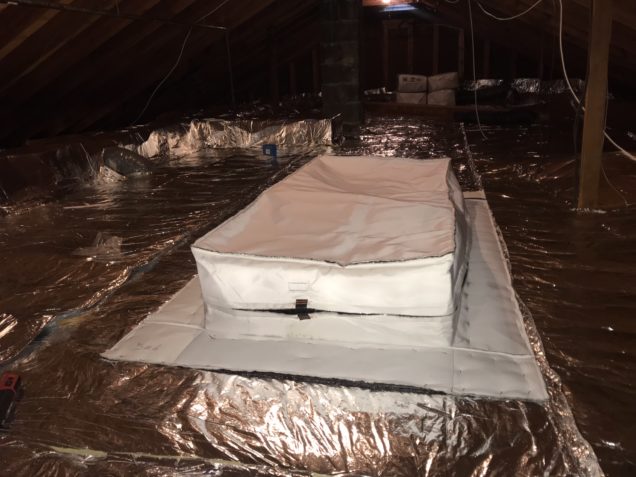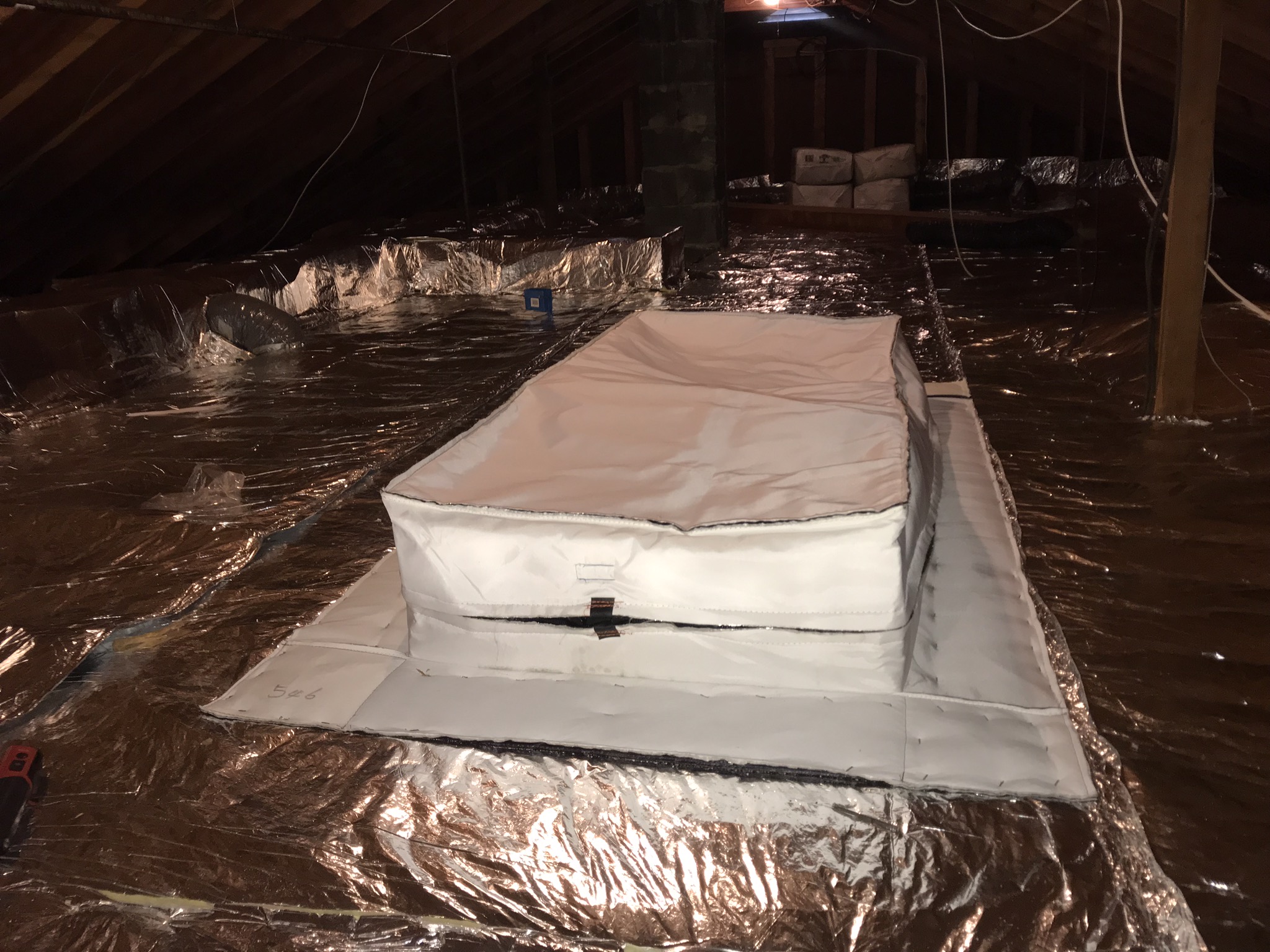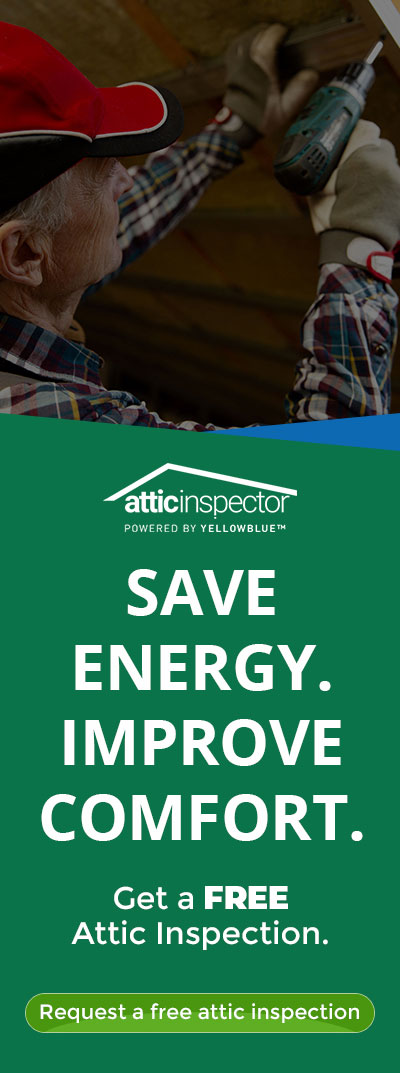When thinking about the health and comfort of homes, the attic is the most over-looked and least inspected space for most homeowners, and yet the attic is the first place you should consider. Why is that? What should you look for? What can actually be done?
A healthy attic is critical to building a healthy home. When your attic is healthy, your home’s comfort levels go up; the air you breathe is cleaner; and your energy costs go down. But too many homeowners don’t know how to make an attic healthy. Too many more don’t know the classic symptoms, like high energy bills, attic moisture and mold growth, and poor indoor air quality, just to name a few.
That’s where we come in. We’re here to help you know what a healthy attic looks like and learn what it takes to create it.
Notice The Symptoms
Let’s take a look at the main symptoms of an unhealthy attic and what they tell you about your attic’s health.
Signs Of An Unhealthy Attic
High Energy Bills
High energy bills are a dead giveaway that a home’s attic may be unhealthy. When energy bills are higher than usual, it means the home is inefficiently using that energy. Attics are often the biggest source of lost energy in a home, meaning they’re a prime suspect. When your energy bills begin to spike, it’s important to remember the attic as a likely source of the problem — and also a prime location for the solution.
Uncomfortable Living Environment
Believe it or not, an entire home’s living environment is affected by how healthy the attic is. The attic plays a pivotal role in your home’s insulation, ventilation, and sealing systems, perhaps more so than nearly any other room in the home. If you’re finding your living areas to have unusually fluctuating temperatures or feeling drafts, it’s a good sign that one of those three home systems need improvement. This improvement often happens in your attic.
Poor Indoor Air Quality
A home’s indoor air quality can sometimes get worse without homeowners even knowing it. A healthy attic is a great deterrent against poor indoor air quality. Homeowners must take steps in
their attics to address pollutants, toxins, and allergens, which commonly cause irritation or even serious long-term health hazards, that collect in their attics and enter living spaces
below. In addition, a cleaner supply of air has positive benefits for the mental health of individuals within the home. A healthy attic prevents air quality from deteriorating by creating better ventilation, airflow, controlling the source of pollutants; and sealing areas where harmful pollutants enter living spaces.
Moisture And Mold Growth
When a home lacks proper air flow, the moisture in the air is allowed to rest within the walls and hard surfaces, creating a suitable environment for mold cells to grow. This is why basements, sheds, and attics are so consistently riddled with mold issues — they often have the worst airflow.
Structural Issues
Many of these symptoms can be a bit hard to spot, but some easy symptoms to see with your own eyes are structural issues. Damage or problems to arise on top of your home’s exterior or interior can actually be signs that your attic space is unhealthy. Rotting wood or trusses, buckling shingles, and ice dams during the winter are a few common structural issues that homeowners run into. If you find your home experiencing these problems, you should consider conducting an attic inspection to identify if the root cause is coming from your attic’s health.
Take Action
Don’t just sit back and let your unhealthy attic drive up energy costs; lower your home comfort; effect the air you breathe. There are plenty of things homeowners can do to make a difference in their attic’s health fast.
Complete An Attic Inspection
Qualified healthy home professionals can provide thorough attic inspections for homeowners. These inspections will help identify what major health problems are occurring in any existing attic. Professional attic inspection services provide homeowners with the information they need to fight:
- Hot and cold spots
- High energy bills
- Poor air quality
- Mold and moisture
- Ice dams
- Structural issues
- Fire hazards
Attic inspection experts can give you a unique home-health report and healthy attic score. This provides homeowners with the information they need to get specific, actionable recommendations.
When an attic inspection is conducted, homeowners can be confident that their attic’s health is being diagnosed by the right professional.
Complete Attic Improvement Projects
Seal attic air leaks
Air leakage through the attic is a common problem. Energy professionals, insulation technicians, and even the federal government agree that air leakage from the attic can be one of the biggest wastes of energy in the entire house. To combat air sealing problem areas in attics, an attic access cover can be installed to ensure airtight airflow between the attic and the floors below. Whether it be preventing cool conditioned air from escaping into the attic or preventing hot summer air from seeping down into the living areas, an attic access cover creates a surefire solution to attic access and scuttle hole sealing problems. In addition, gaps must be sealed
around bathroom fans, HVAC supply and return vents, pipes, and recessed light fixtures. These simple solutions are critical steps in improving indoor air quality and energy savings.
Add attic insulation
As we discussed earlier, insulation is one of the key pillars of a home’s health. As such, an attic’s insulation is one of the most important areas of the home to have insulated the right way. Many homeowners may have insulation of some kind in their attic, but do not attend to it regularly, and do not know how effective it is truly being.
During an attic inspection, qualified healthy home professionals can determine whether the current insulation is properly installed and inspect current insulation depletion levels. Many attic insulation improvements, like multi-layer insulation (MLI), work in addition to the current insulation found within an attic. Multi-layer reflective insulation helps improve thermal insulation and stops radiant heat transfer, making your home more efficient and can also play a role in managing indoor air quality when properly installed.
Add active attic ventilation
Most homes have traditional passive ventilation systems like ridge, soffit, and turtle vents — but often these systems are not enough to remove excess heat and moisture. To fully remove these creators of poor attic health, an active attic ventilation system is often required.
An active attic ventilation system uses an additional tool, like a solar attic fan, to create an additional boost to the ventilation system. These systems provide a constant, steady air flow into the attic, and help prevent excess heat and moisture buildup.
Get Professional Advice & Healthy Attic Solutions
To get started on creating a healthier attic space, be sure to contact us today to speak with a trusted independent authorized yellowblue dealer. Our team of experts can point you in the direction you need to turn your attic space into a healthier living environment.




